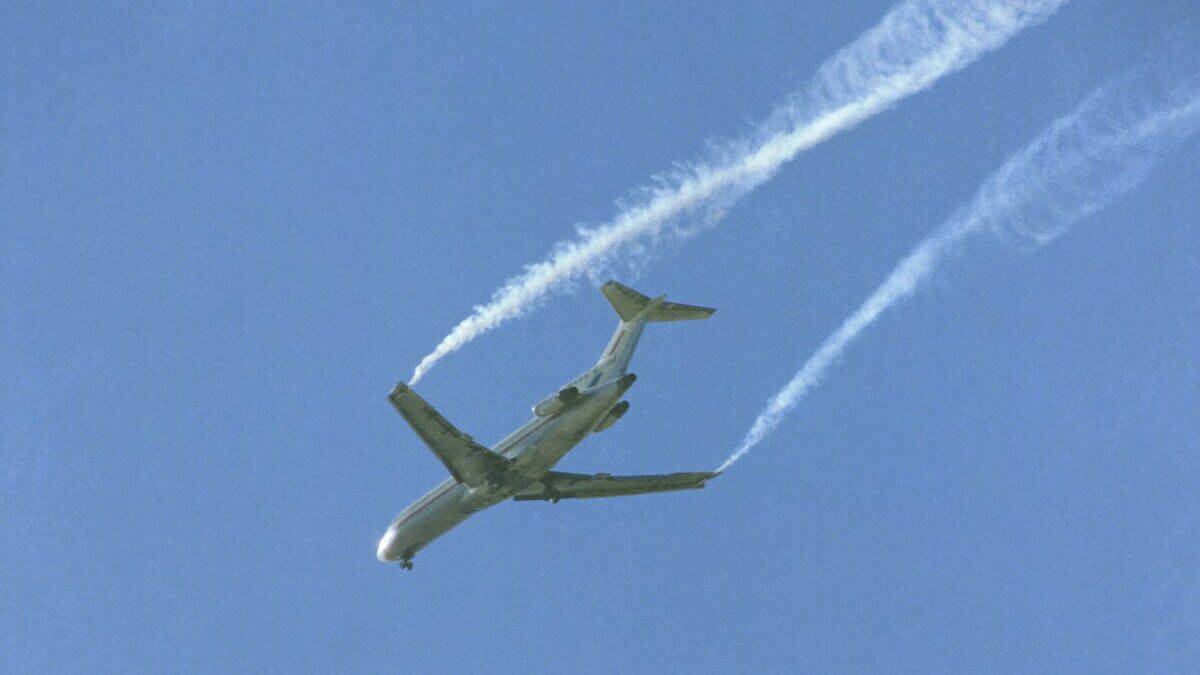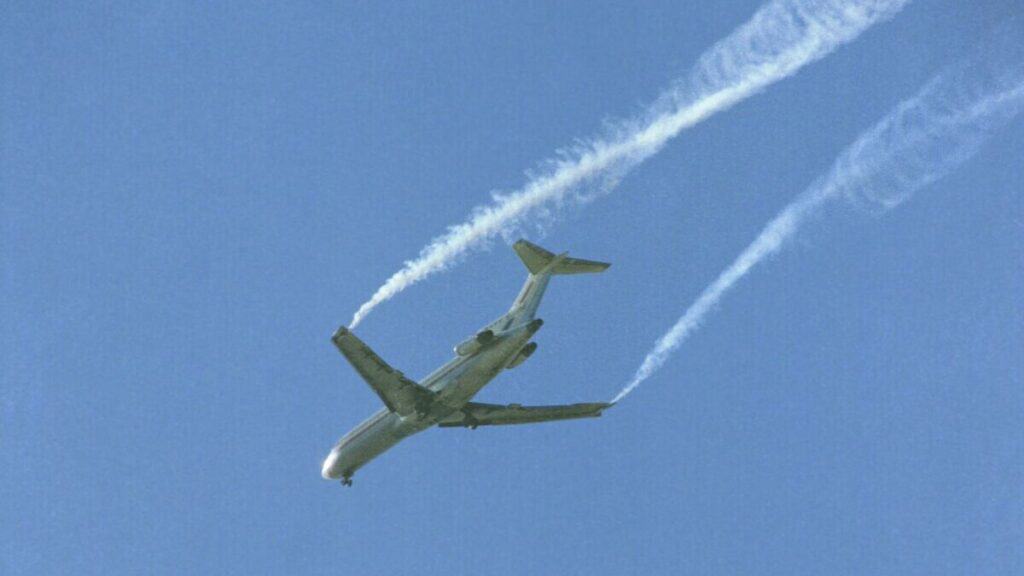
When a low-flying plane passes through clouds, you may notice some cool-looking spirals coming off the wingtips. These are called wingtip vortices. But what are they and how are they formed? Are these vortices present all the time?
Wingtip vortices are rotating funnels of air that leave the tip of an airplane wing as it flies. Higher air pressure formed under the wing tries to move to the lower pressure above the wing and by flowing around the wing tip this creates the vortices. Large, heavy airplanes create very strong vortices.
Even as a pilot myself, seeing an airplane coming through a cloud or dust and churning up these funnels always gets my attention. To most, they are just a cool visual indication of how air is working around an airplane, but from a pilot’s point of view, these vortices can be extremely hazardous and need respect!
What are Airplane Wingtip Vortices and How are They Created?
Planes achieve lift by creating a pressure difference between the topside and underside of their wings. The shape of the wing creates a higher pressure under the wing than air on top of the wing. This causes an upward force – Lift.
To create this lift the airplane has to be moving through the air.
Air is a pretty simple thing and all it wants to do is stay in balance, also known as equilibrium. When it’s separated from other air pockets around it and the pressure between them is different, they want to rejoin and balance out.
Air always tries to move from a point of high pressure to a point of low pressure and because an airplane wing is artificially creating this difference in air pressure between two pockets, the air is going to move.
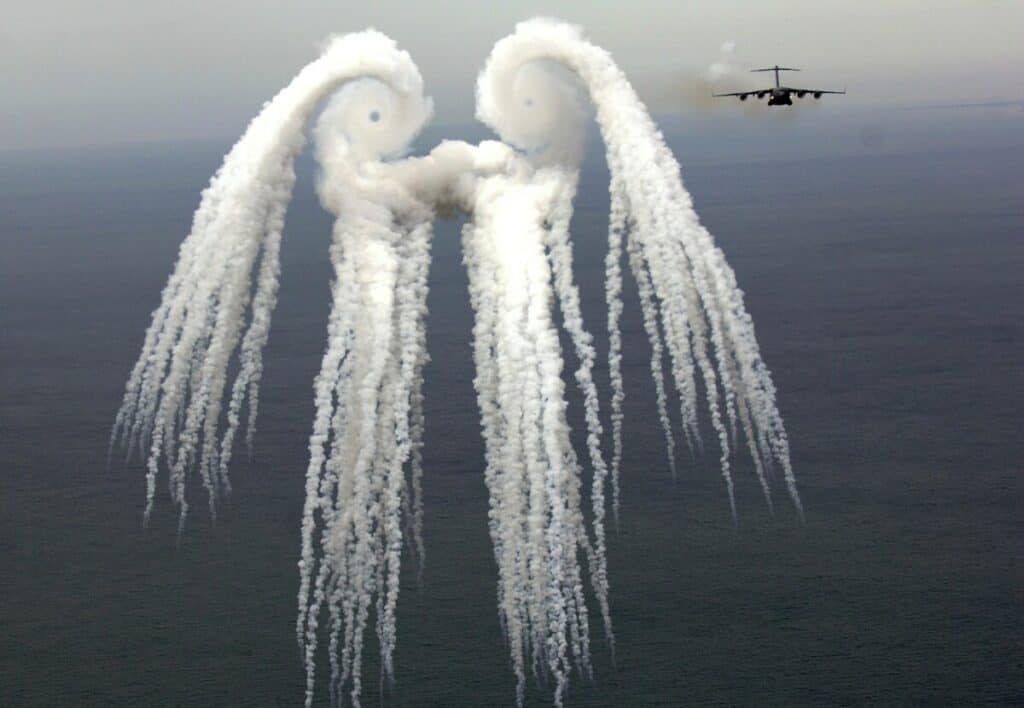
Since air is moving at a fast rate across the wings, it becomes near impossible for the air to spill to the topside through the wing. The air, therefore, can only move from the bottom to the top part of the wing by going around the wing tip.
This creates a circular motion of air at the wing tips – The Vortice.
The air coming off the back of the wings instantly balances out but during that split second the air is passing from the front to the back of the wing, the only route available to equalize is around the wing tip.
Because the airplane is moving forward through the air each vortex is left behind but is then joined by the next vortex just created. This creates a funnel similar to a tornado, only laying horizontally.
This tornado-like motion of air is invisible and always present whenever a plane is in forward motion. The faster the airplane wing is moving forward, the more, and stronger the vortices are created. Vortices can only be seen when a plane passes through clouds, high humidity, or some sort of visible particulate suspended in the air.
These suspended particulates move with the airflow and allow you to track how the air is moving with your eyes.

Join My Newsletter & Get Great Tips, Information and Experiences To Help You Become a Superb Pilot!
Are Wingtip Vortices Good for Planes?
Vortices have a negative impact on both the plane producing it and any aircraft behind it. It is because of these vortices that airports are limited to how often an airplane can land or take off.
Some of the major disadvantages of wingtip vortices include:
- Fuel Inefficiency
- Wake Turbulence
Fuel Inefficiency
As the air spill over the tips of the wing and creates vortices, these in turn create drag. Drag works against the thrust of the engines and tries to slow the aircraft. Although the drag is small and not enough to be noticeable it soon accumulates over a long flight.
Any form of drag reduces the plane’s fuel efficiency as the plane has to spend more fuel thrusting the plane forward to overcome the effects of drag. The less drag an aircraft has, the less thrust is required to propel it through the air.
The less thrust required, the less fuel is consumed.
Because wingtip vortices create drag they increase fuel consumption. The total fuel consumed just to overcome the drag multiplied by the number of hours an airplane flies in its lifetime can equate to millions of dollars in additional fuel costs.
Wake Turbulence
Wake turbulence is the disturbance in the atmosphere caused when wingtip vortices are produced, especially by large and heavy airplanes. They are usually found near the ground at airports as wingtip vortices are more pronounced when planes are flying slow but creating massive amounts of lift, as in the case of takeoffs and landings.
Vortices get larger as they get farther away from the plane. They are invisible and can stay near the same position for several minutes if there is no wind to help break them apart and allow them to dissipate. All vortices do eventually dissipate but take longer without wind to help.
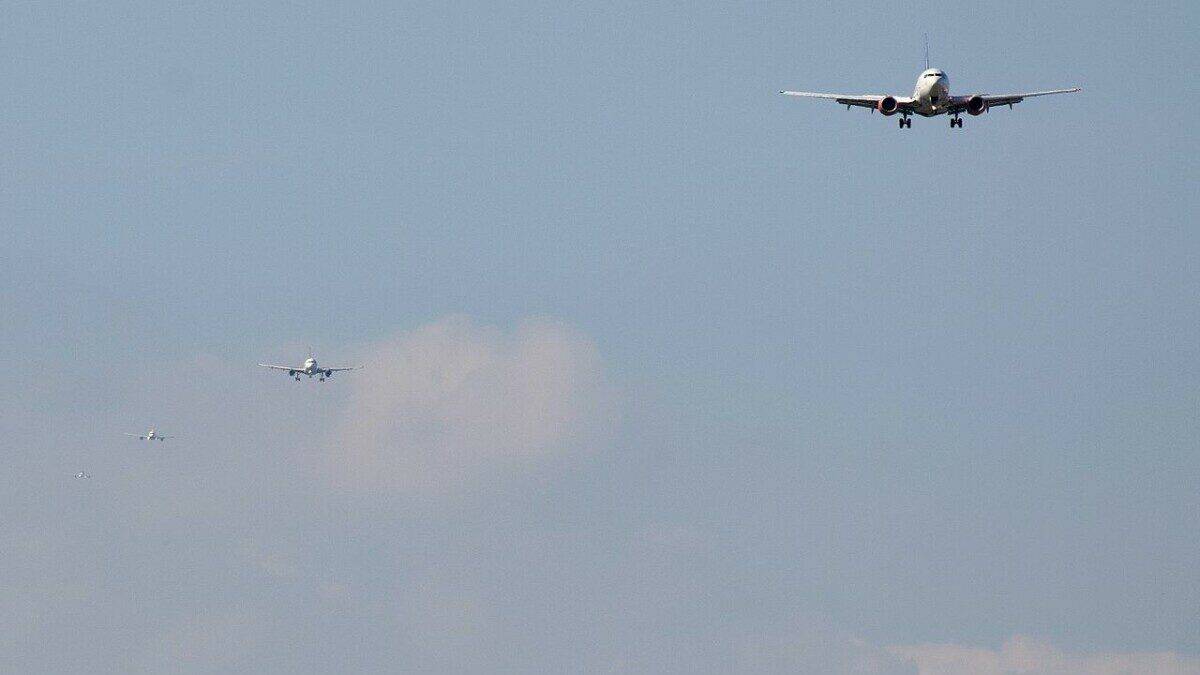
All aircraft, no matter their size produce their most lift when the air that the wings and rotorblades are working on is smooth and undisturbed. Any aircraft encountering unsettled air pockets experiences turbulence. The stronger the disturbance, the greater the turbulence is felt in the aircraft. This is where vortices pose a threat as they linger just above a runway.
If a smaller airplane comes into contact with large vortices from a bigger plane, it may experience violent turbulence. Because the wingtip vortices form a rotating tunnel of air some light aircraft have been caught and have even rolled over uncontrollably and crashed as such cases happen at low altitudes where recovery is almost impossible.
Even any aircraft experiencing violent turbulence just before touchdown or just after liftoff could be put into a very dangerous situation within close proximity to the ground.
Aircraft that are larger than the aircraft in front of them are less prone to wake turbulence but it does affect them, especially upon landing.
For this reason, planes are required to have adequate separation distances when taking off and landing subsequently. Air traffic controllers will space aircraft apart depending on their size to one another to allow the vortices to dissipate before the next aircraft arrives in that particular parcel of air.
For landing, air traffic controllers follow these guidelines:
Super = > 500,000lbs
Heavy = 300,000 – 500,000lbs
Large = 40,000 – 300,000lbs
Light = < 40,000lbs
| First Landing Aircraft | Second Landing Aircraft | Spacing |
|---|---|---|
| Super | Super | 4nm |
| Heavy | 6nm | |
| Large | 7nm | |
| Light | 8nm | |
| Heavy | Heavy | 4nm |
| Large | 5nm | |
| Light | 6nm | |
| Large | Light | 4nm |
Other precautionary methods to avoid flying into a preceding airplane’s wake turbulence include taking a flight path well above that of the previous plane, which means lifting off at a point on the runway prior to where the last plane took off. This allows the second aircraft to be flying above the slowly sinking vortices of the first aircraft.
A second method is landing beyond the touchdown point of the previous plane. As soon as an airplane lands its lift is instantly decreased, thus the severity of the wing tip vortices created is also decreased. If the second aircraft landing touches down at a point further along the runway from the first airplane’s touchdown point the vortices the pilots will experience will be negligible.
If a pilot doesn’t feel comfortable with the latter as this reduces the distance available for decelerating, they may initiate a go-around. It is for these reasons why air traffic controllers try to separate aircraft so that costly go-arounds are avoided.
Learn More…
Try These Articles:
* Do Airplanes Use Hydraulics?
* How Long Can Airplanes Fly For? – Top 10 Routes!
How are Wingtip Vortices Mitigated?
Since WWII aircraft manufacturers have come up with various methods of reducing wingtip vortices. Although the vortices cannot be completely eliminated, they can be severely reduced using the following methods:
- Winglets/Sharklets
- Raked Wingtips
- High Aspect Ratio Wings
- Elliptical Wing Designs
Winglets/Sharklets
These are devices that are fitted to each wingtip and are angled upwards, and sometimes downwards. They can be molded into the wing itself or be bolt-on additions for older aircraft. Each manufacturer has its own designs, but they essentially do the same job.
This has been by far the most common way of mitigating vortices since they were discovered in the ’80s.
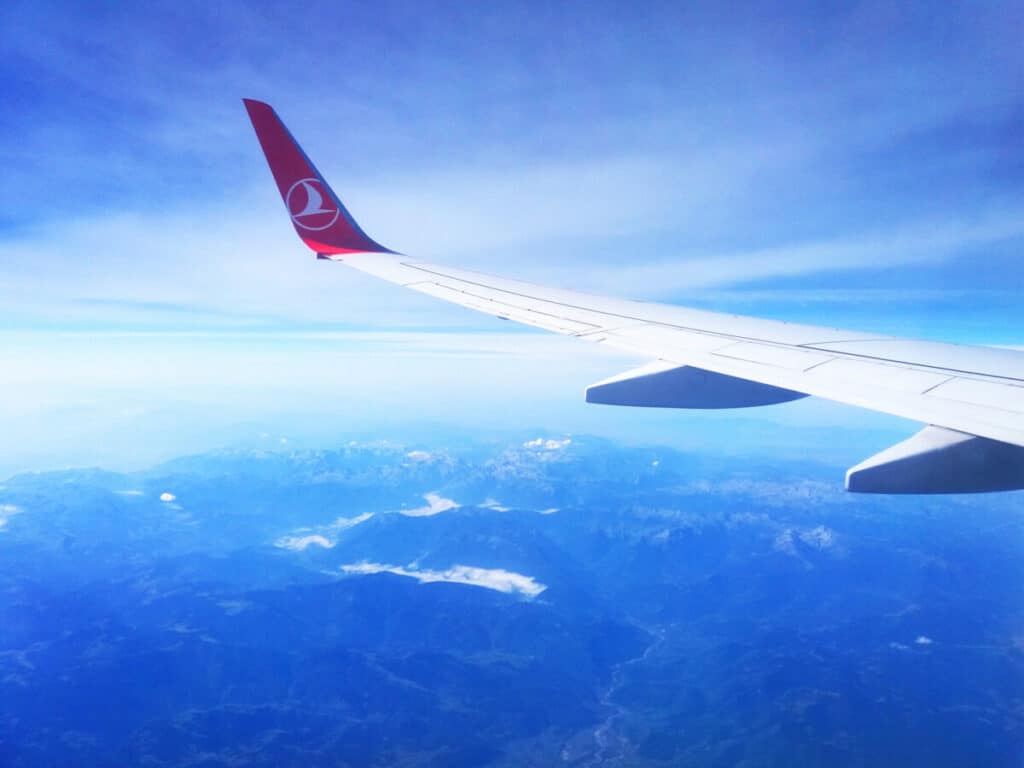
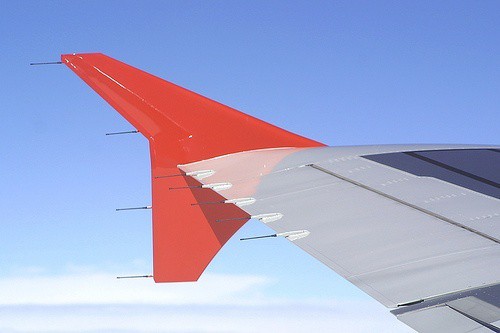
Known as Winglets on Boeing airplanes and Sharklets on Airbus airplanes, they both do the same job and come in various forms and designs.
Winglets act as pressure blockers. Their angle reduces the amount of air getting to the other side of the wing. On wings without winglets, high-pressure air circles around and goes to the top of the wing where it presses down on the wing causing drag.
With winglets, the air is forced up the side of the winglets, and when it circles around to the inside surface, it presses down on the side of the winglets instead of the wing. This reduces the effect that vortices have on the generation of lift as they don’t hit the wing directly.
This dramatically increases fuel efficiency.
Raked Wingtips
Airplanes like the Boeing 777x and the 787 Dreamliner had their designers opt to eliminate winglets as they added more weight and are prone to flutter. Instead, they increased wing spans by adding extensions at the wing tips.
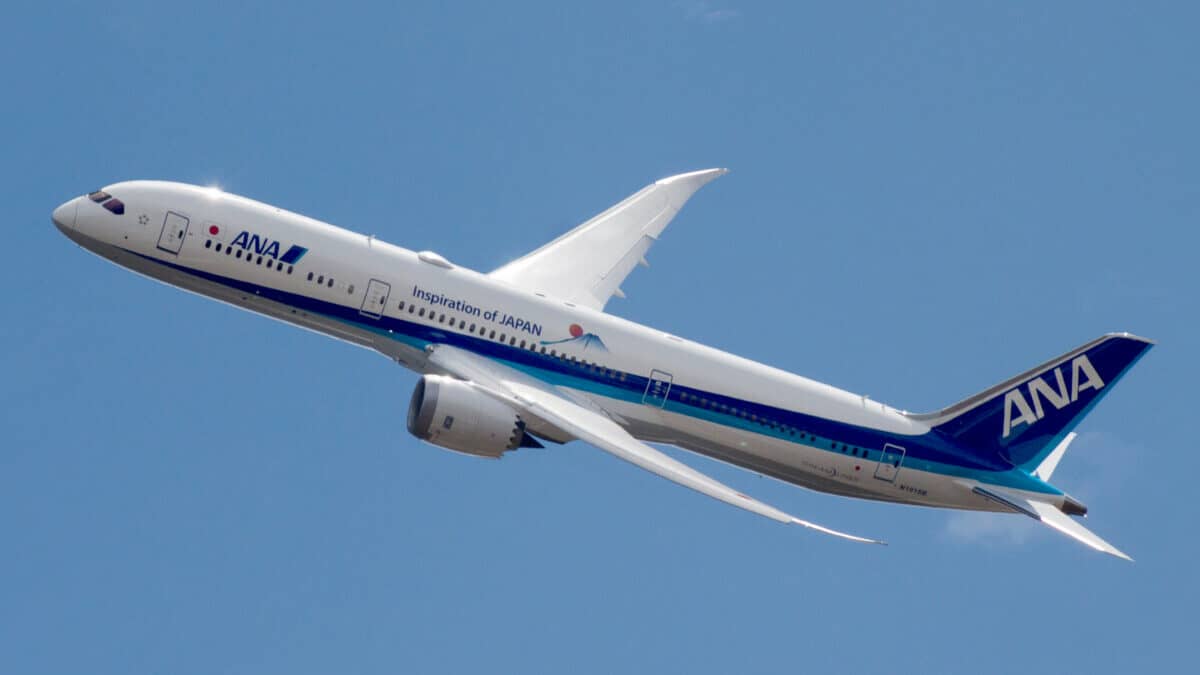
These extensions were then angled backward as an integral part of the wing so that they have a larger sweep backward than the rest of the wing, and a pointier tip. Doing this isolates the vortices to a significantly smaller area of the wing and increases the distance between the vortex and the plane’s body.
These were proven to cause a significant reduction in drag on long-haul flights which these aircraft were aimed at.
The Boeing 777x also has foldable raked wingtips to be able to fit in airport gates. Its full wing span would have put it in the same group as bigger planes like the Airbus A380, which would make its use limited to airports that can support such big planes and incur higher airport fees for its operators.
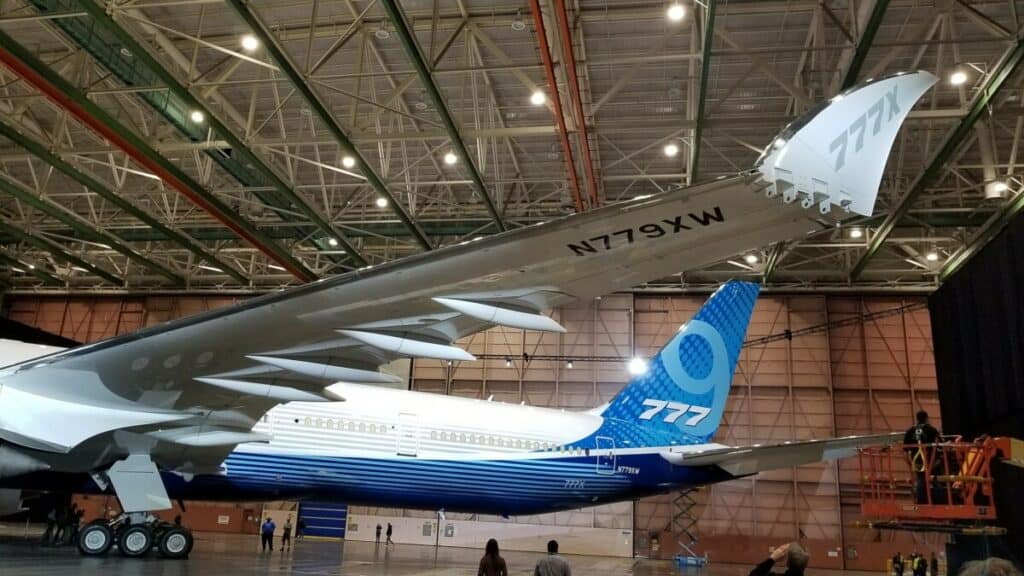
Once the aircraft has been pushed clear of the gate the wingtips are lowered and locked into place for the duration of the flight. Once in place, they form the same wing profile as the B787 seen above.
Larger Aspect Ratio Wings
Aspect ratio means the ratio between the length of the wing and the width across it. Larger aspect ratios, therefore, mean longer and thinner wings. These have been proven to dramatically reduce vortices. Such wing designs have been in use for a long time by gliders as they produce minimal drag.
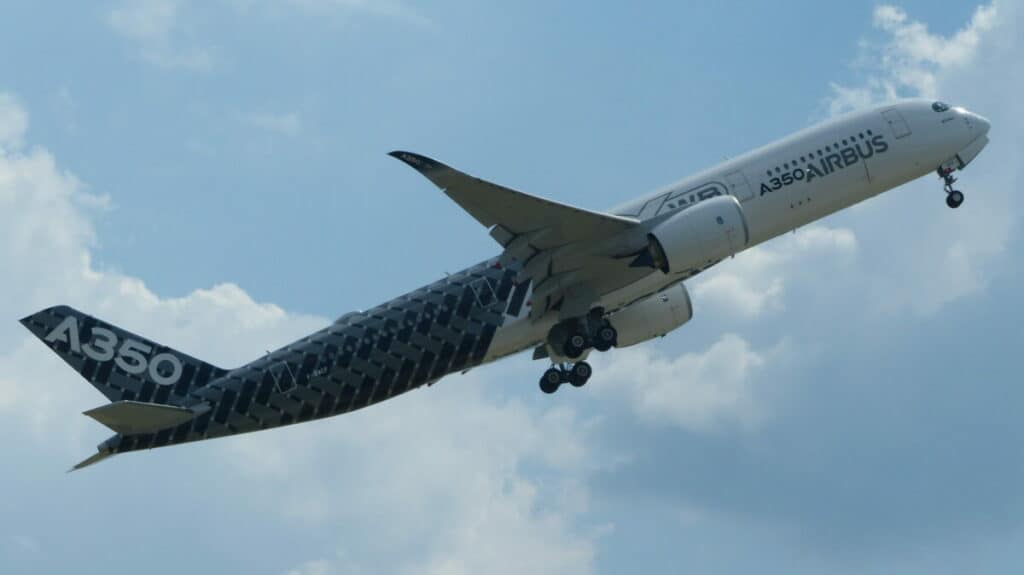
With advances in technology, airplanes like the Airbus A350 and Boeing 787 are being manufactured with longer and thinner wings as compared to their predecessors. The materials and processes now used allow for the wings to be made in very different ways compared to the conventional airplane wing, allowing for these dimensions to now be achievable.
This comes from the theory that planes with infinitely long wings and no wingtips would not experience wingtip vortices. Longer wings, therefore, reduce the span-wise movement of air which causes vortices.
Elliptical Wing Designs
Elliptical wing designs produce a varying amount of lift along the wing, with the most lift being produced in the middle where there is more surface area. The least amount of lift is generated at the tips as they have smaller surface areas, hence a smaller pressure difference. This causes smaller vortices and less drag.
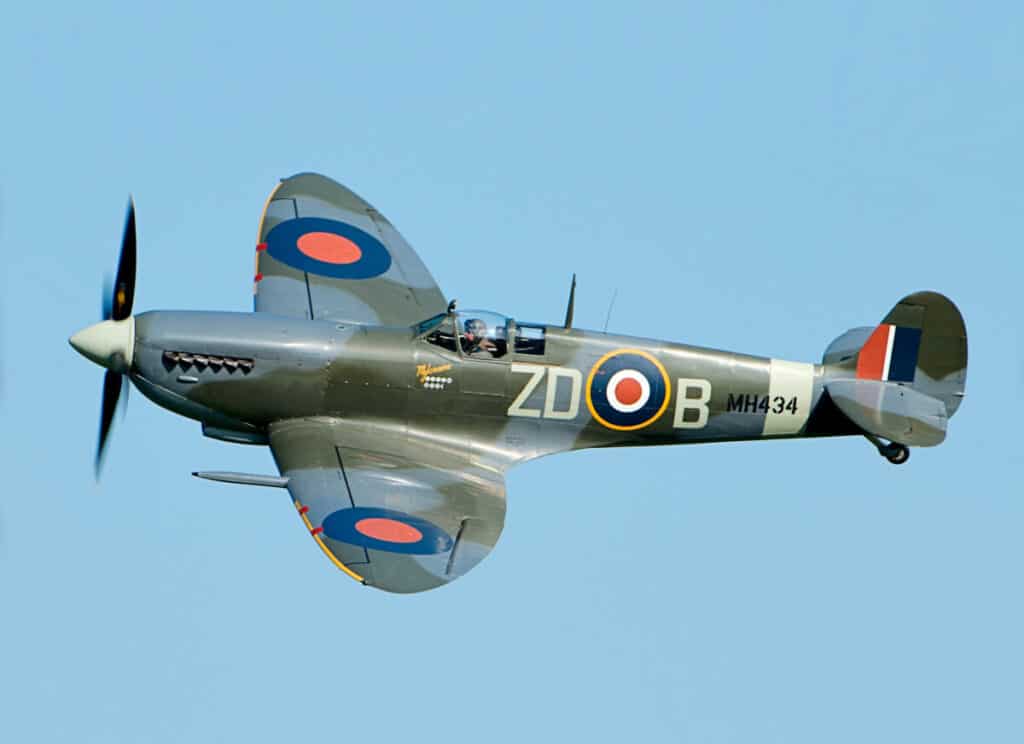
This design was used in the British WWII Supermarine Spitfire but is rarely used anymore as the shape is harder to manufacture and reinforce without making it too heavy. Controllability on a large-scale wing also makes the wing shape a decision-breaker for engineers.
Learn More…
Try These Articles:
* How Do Airplanes Handle Lightning Strikes?
* How Do Airplanes Not Freeze?

